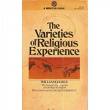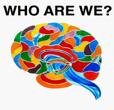NeuroLeadership!!
I pose this comparative think as today, a very special day in the U.S., when we pick our nation’s leader to take us forward into this new century, I look back over the last year’s responses to SpaceSuit Yoga.com and marvel at the interest that Michael Phelps and Dr. Jill Bolte Taylor have stirred within the online community! In light of the press and audience commentary that covers these two American heroes, I have no problem nominating both Phelps and Dr. Taylor as role models for neuro-leadership.
That’s right, if one takes the premise and profile of neuro-leadership put forward in recent NY and Sydney NeuroLeadership Summits (and as reported on this website), both Phelps and Dr. Taylor model the behavior of one who achieves success by way of brain-based approaches to problem solving, especially in two ways:
1) the rigorous, consistent use of attention to problem-solving by means of task-oriented solutions;
2) the generous offering of themselves as motivational coaches in the service of others.
 In the case of Phelps’s winning 8 gold Olympic medals, we witnessed en mass, the results of his paying close attention to all that is required of a star Olympic swimmer, namely,
In the case of Phelps’s winning 8 gold Olympic medals, we witnessed en mass, the results of his paying close attention to all that is required of a star Olympic swimmer, namely,
a) consistent refinement and improvement of his strokes by invoking attention to spatio-temporal agility,
b) highly motivated, goal focused projection of his human energy, and
c) a keen and consistent application of attention to all that it takes to fuel a body to move in pool water like a great Mako shark!
 In the case of Dr. Taylor, who suffered and survived quite nicely, a severe stroke in her left hemisphere, we learn the key lesson through her various online and offline modes of presentation (all previously mentioned on this blog): Regaining access to speech and to Prefrontal Cortex executive functions (analysis, judgment, decision-making) required a kind of Olympic style commitment to “paying attention” to re-learning vowels and consonants, to being able to conceptually distinguish and label right from left.
In the case of Dr. Taylor, who suffered and survived quite nicely, a severe stroke in her left hemisphere, we learn the key lesson through her various online and offline modes of presentation (all previously mentioned on this blog): Regaining access to speech and to Prefrontal Cortex executive functions (analysis, judgment, decision-making) required a kind of Olympic style commitment to “paying attention” to re-learning vowels and consonants, to being able to conceptually distinguish and label right from left.
As Jeffrey Schwartz outlined clearly on the first night of the NeuroLeadership Summit and again throughout the whole of the summit proceedings, “attention density” is that key to changing the brain and thus the very conditions and propensities if you will, of our individual body/mind. And as David Rock was apt to point out, if attention is the protagonist in our mental theater, insight is that beautiful arc we reach as we crystallize evanscent images and thoughts.
The story of Phelp’s prep for Olympic spectacle, the drama of Taylor’s enlightenment — each make for a powerful tutorial on leadership development in training. As for generosity in the service of others, it is clear by their mutual willingness to take their insights and transform them into tools for educating and possibly saving the lives of others, Michael Phelps and Jill Bolte Taylor visualize for all of us the continuum of human excellence in learning and performance.
My SpaceSuit Yoga questions to you dear somanauts, are this:
First, “If you could learn anything about the human brain, about your own human brain, what would you like to know and what would you do with that information?”
Second, “How do you practice “paying attention?”
I welcome your responses and comments. And please know that in the coming months, my institute will be offering special “attention and awareness” training sessions for private individuals and those developing leadership.
As always, May the Breath Be With You!
Synaptically yours,
Dr. G.
P.S. At the time of writing this, it appears Barack Obama has been named President-Elect of the U.S.A.! Talk about attention density and generosity in the service of others!













